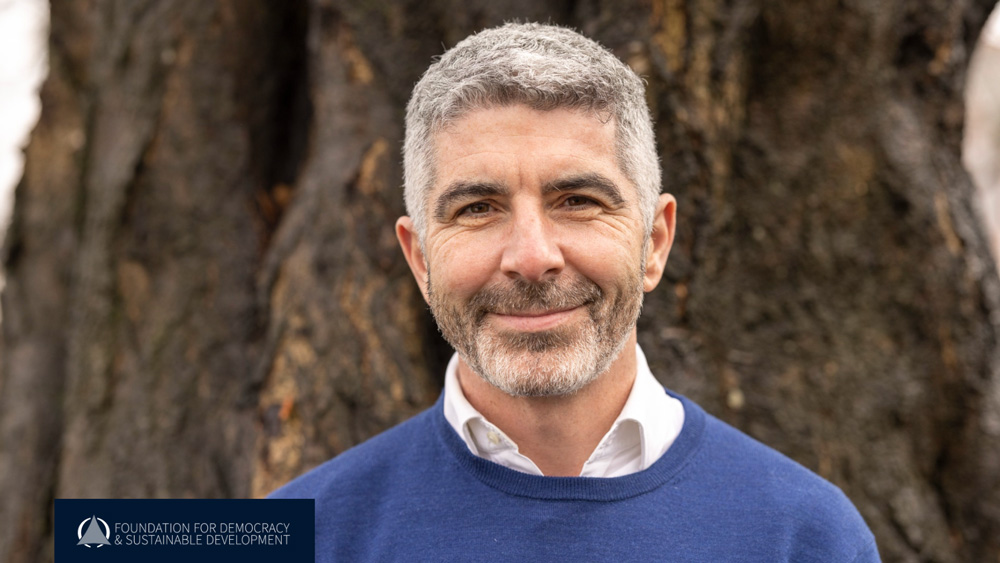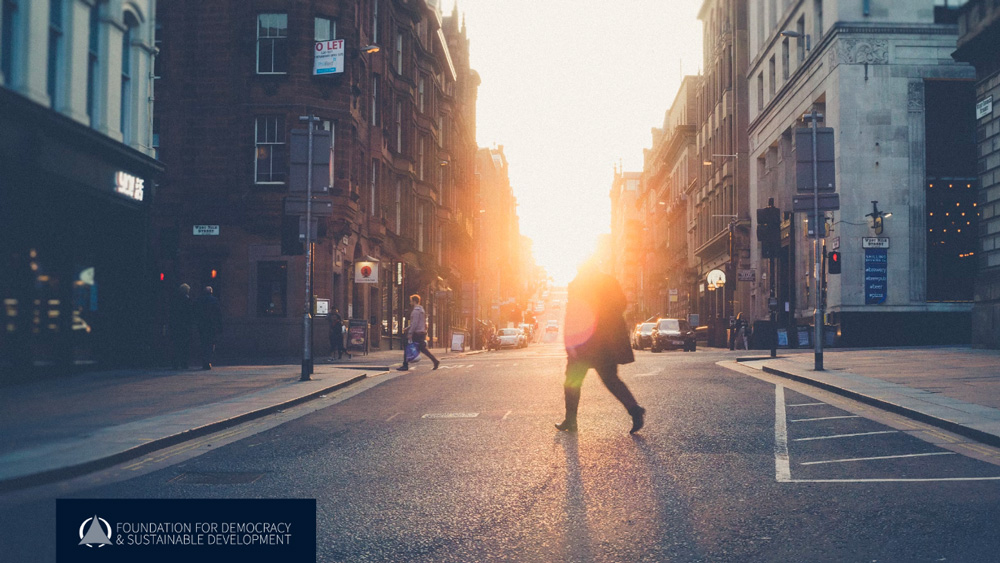János Zlinksy, one of our longest serving Trustees and an advisor to the UN Open Working Group on Sustainable Development Goals, reflects on the relationship between the Paris COP and the Sustainable Development Goals
Interview by Nick Aveling
There’s been a lot of debate as to whether Paris COP21 can be considered a ‘success’. As an advisor working with the UN Open Working Group (OWG) on Sustainable Development Goals (SDGs), what’s your perspective?
It was absolutely a success, from that perspective especially. The OWG completed its task except for one window: the climate goal. The UN member states ensured there was an outline climate goal in the SDG system, a “placeholder” for climate action, and even went as far as securing a few targets mainly in the field of climate adaptation, rather than mitigation. But Goal 13, the climate goal, was the only one with an asterisk, which pointed to a footnote stating that all future defining action under this heading was basically the business of the UN Framework Convention on Climate Change (UNFCCC).
From that point of view, there is a Paris Agreement, it provides concrete action and these concrete actions can be translated into targets similar to the ones the OWG proposed. In fact, some of these targets confirm the pre-existing content in Goal 13.
Did the UNFCCC build on the SDGs’ climate targets, then, or merely confirm them?
It is of course a longstanding aspiration of the international community to keep the temperature from rising more than 2°C. In the OWG, this goal was in the preamble; in the Paris Agreement it’s in the core text, meaning it’s one of the targets, not just contextual. This is new and hugely important. And this, mutatis mutandis, applies for the rest of the Paris Agreement: some measures confirm or detail the OWG targets, while others add some new targets. All in all, we can say now that the Climate Goal of the global post-2015 development program “Transforming our world” is complete.
The most common criticism of the Paris Agreement is probably that it lacks teeth. Is this criticism fair?
Most international agreements arrive in this setting, in this community of nations, and now we can choose whether they will be enforced through encouragement and example-setting, through subsidies or through penalties. The Paris Agreement doesn’t leave this to chance. In what I call Target 6, which sets up the Agreement’s monitoring scheme, it says that control must be transparent, non-adversarial and non-punitive. This may send the message that you don’t have to comply; I can’t argue much with that. But I will say at the same time that it leaves open a place for enforcement and, later on, describes such measures.
Transparency is, after all, a euphemism for the name-and-shame scheme, even if it is non-adversarial. As for being non-punitive, that basically means you can encourage, you can assist and you can subsidise, but you’re not supposed to withhold or sanction.
Which, of course, has implications on the Agreement’s plan to see the developed world transfer $100 billion a year to the developing world to help minimise climate change there.
Of course this is the minimal sum the developed world should bring together and provide. It’s worth pointing out, though, that donor coordination over the individual subsidies and support can be closely tied to the conditions for any specific project. In other words, there is a certain kind of control.
The developed world is the hard nut to crack. For the developing world, these subsidised investments and overseas development assistance can always be geared into environmentally friendly technologies and renewables and so on. But who will make sure that the European Union, Japan and others will reinvest and maybe throw away technologies which have a good five, six years to run? That’s the really big question. There is minimum pressure anyone can exert on an economy like Britain or Germany or Japan for this technology change – other than transparency.
Implementing the Paris Agreement will require immense change. How well equipped are democracies to see it through?
I could say, not to evade the question, that the SDG system is very complex. Many of us should be able to improve our democratic practices and institutions while trying to implement the SDGs. In fact, one of the SDGs is about open and responsive institutions, and many other goals including education, agriculture, equality and so on contain targets that address questions of transparency and equity.
So the question isn’t only whether democracies are equipped to make these changes. It is a task within this framework to make our societies democratic enough – resilient enough – to handle the transition. This will take time, and it does carry a risk.
That being?
The biggest risk in this whole scheme – the SDGs, and the Paris Agreement within them – is that our turn, so to speak, is not fast enough. It’s the Titanic dilemma. We all know the Titanic tried to change course, but it was a big boat, it was moving very quickly and the change of course came too late, even though it was a decisive move. These are the factors we need to consider: whether we can start the turn fast enough, whether it will be decisive enough.
Are you concerned that the messy, adversarial nature of democracy could stall us further?
I think it’s a communication problem. It’s very interesting in this metaphor how we can already see that the message from the lookout is starting to arrive with the officers. That’s why we have the SDGs, which are basically the orders from the bridge to change course. But these will have to be understood and implemented by the crew. So who is the crew now?
We know from the historical account that at a certain point, several able seamen and high ranking officers rushed to the helm to try to steer the ship to safety. That’s what ought to happen now: institutions that understand should lead by example.
Dennis Meadows, author of The Limits to Growth, said years ago that it’s not technology that will make or break the transition, but society. It depends on whether people and communities can align, whether they can change their values, whether they can decide in time to act. From a technological point of view, we already know enough, and we don’t have time to develop brand new things anyway. What matters is that people and communities come together to act. This is where democracy can help.
+++
Targets from the Paris Agreement: Actions
|
PA 1. Hold the increase in the global average temperature well under 2oC above pre-industrial levels and pursue efforts to limit the temperature increase to 1.5oC PA 2. Aim to reach global peaking of GHG emissions as soon as possible, and undertake rapid reductions thereafter in accordance with best available science, so as to achieve a balance between anthropogenic emissions by sources and removals by sinks of GHGs in the second half of this century, on the basis of equity, and in the context of sustainable development and eradicating poverty. PA 3. Increase the ability to adapt to the adverse impacts of climate change, foster climate resilience, and reduce vulnerability, following a country-driven, gender-sensitive, participatory and fully transparent approach, based on and guided by the best available science. PA 4. Avert, minimise, and address loss and damage associated with the adverse effects of climate change, enhancing understanding, action and support, including through the Warsaw International Mechanism. PA 5. Co-operate in taking measures to enhance climate change education, training, capacity building, public awareness, public participation, public access to information PA 6. Set up the expert-based committee established under the Paris Agreement to serve as a mechanism to facilitate the implementation of and compliance with the provisions of the Agreement in a transparent, non-adversarial and non-punitive manner. |
Targets from the Paris Agreement: Means of Implementation
| (MoI)
PA i. Make finance flows consistent with a pathway towards low GHG emissions and climate resilient development. PA ii. Developed country Parties shall provide financial resources to assist developing country Parties with respect to both mitigation and adaptation; other Parties are encouraged to provide such support voluntarily. PA iii. Prepare and communicate clearly and transparently nationally determined contributions, and pursue domestic mitigation measures to achieve the objectives of such contributions. PA iv. Parties may choose to pursue voluntary cooperation in the implementation of their NDCs to allow for higher ambition in mitigation actions. |



